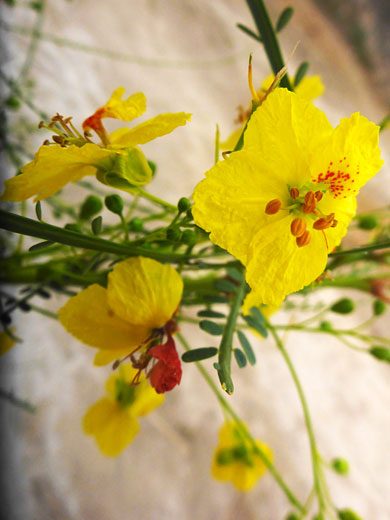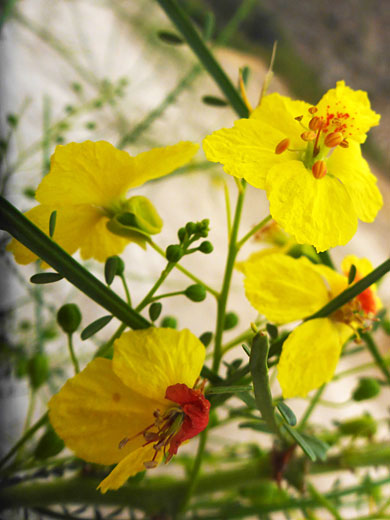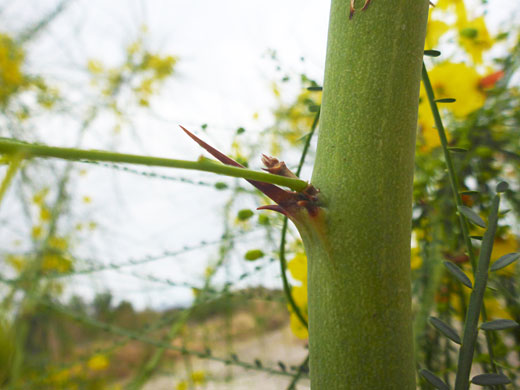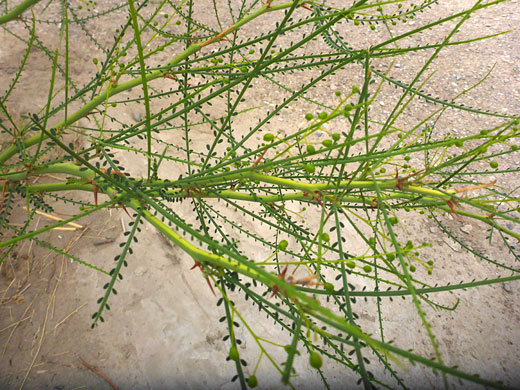Common names:
Mexican palo verde, Jerusalem thorn
Family:
Scientific name:
Parkinsonia aculeata
Main flower color:
Range:
Possibly native to Arizona; now found in all the southern states
Height:
Up to 30 feet
Habitat:
Roadsides, streambanks, disturbed ground, open woodland; from sea level to 4,300 feet
Leaves:
Divided into two several linear, flattened, narrowly winged, sparsely glandular segments (pinnae), with between 40 and 80 tiny leaflets, alternate or opposite
Season:
March to September
Parkinsonia aculeata is a much-branched tree, with smooth, yellowish-green upper stems bearing spines (two, less often three) at the leaf nodes, found in tropical regions of all the southern states. Bark on the trunk and lower branches is brown, and rough. Young branches are sparsely hairy, around the nodes. Leaves are bipinnate, each segment up to 12 inches long, lined by up to 80 tiny, oblong to oblanceolate leaflets, soon withering.
Flowers are in racemic clusters of up to 15, subtended by small, lanceolate to linear bracts, and attached by stalks of less than half an inch. Flowers have a five-lobed calyx, often withering early, and a five-lobed yellow corolla, with ten stamens - yellow filaments and large orange/pinkish anthers. The upper corolla lobe is usually flecked with orange towards the base; often becoming paler as it matures.
Flowers are in racemic clusters of up to 15, subtended by small, lanceolate to linear bracts, and attached by stalks of less than half an inch. Flowers have a five-lobed calyx, often withering early, and a five-lobed yellow corolla, with ten stamens - yellow filaments and large orange/pinkish anthers. The upper corolla lobe is usually flecked with orange towards the base; often becoming paler as it matures.
All Contents © Copyright The American Southwest | Comments and Questions | Contribute | Site Map




